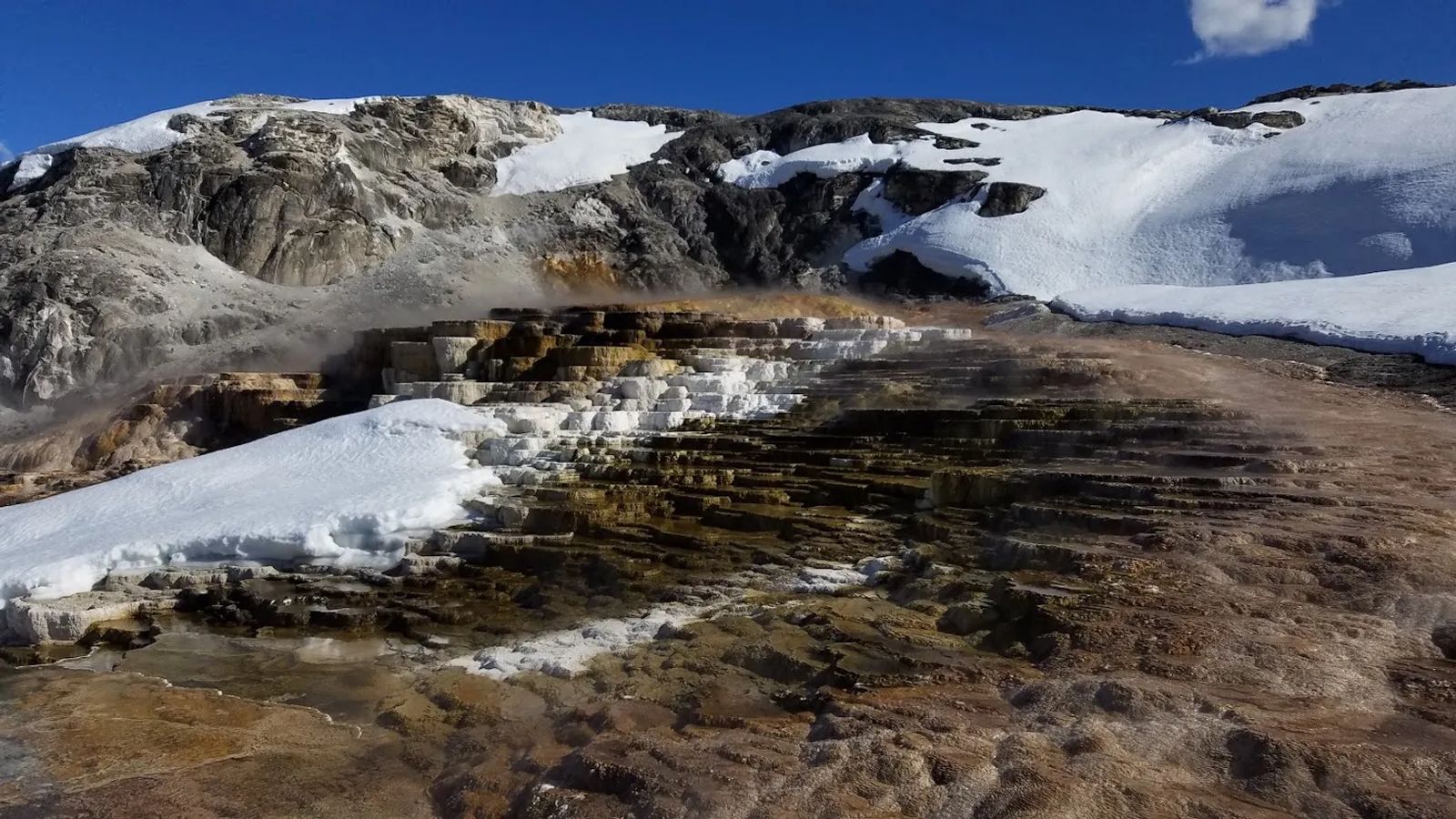
Weekly Gem #191 She has a step in her spring
Published 4/6/2019
Location: This hidden gem is a small part of Mammoth Hot Springs, in Yellowstone National Park (see the Clue Me! Map). Cleopatra Terrace is a place that causes you to stop. Which is great, because then you have a chance to notice the details.
For example, see those steps? They aren’t steps at all, but irregularly shaped bowls. Where the water flows very slowly (on the left in the photo), the bowls are large, with tall sides. Where the water flows quickly, the bowls are tiny, because erosion is happening almost as fast as bowls are built. You can see the tiny bowls / terraces if you zoom in on the photo.
The colors are formed by bacteria that live in the hot water. Only a few bacteria can survive in the very hot water, and as the water cools, the bacteria that live there also change. You wind up with various shades of red, orange, yellow, green, and blue, maybe even some indigo and violet, based on the color of the bacteria that match the water conditions.
This is all made possible because Yellowstone is a massive volcano, with a pool of magma sitting unusually close to the surface. Super-heated water reaches temperatures of several hundred degrees above boiling, and on its way back up to the surface, it passes through limestone.
You know that white film, the “lime” that collects on your faucets, shower walls, and in your teapot? The extremely hot Yellowstone groundwater is absolutely loaded with dissolved calcium carbonate … lime … but as soon as the water reaches the surface and cools, some of the lime has got to go.
Here’s how these terraces form. You need a flat surface to begin with, with some irregularity … like a stick or a rock. Anything that causes a little turbulence as the water flows by. That turbulence triggers a lot of the excess calcium carbonate to instantly drop out of solution and cling, right there. First the debris that caused the turbulence gets covered, then a small wall moves sideways, eventually meeting an obstacle. Then the wall grows upward, because it’s turbulent right where the water pours over the edge. Now you have a bowl. Eventually a funny-shaped edge or a new stick or rock causes the wall to redirect, creating the next bowl, and the next, and the next.
A few thousand years later, and you have something that causes people to stop, and look more closely.
.........
Here's the hidden gem entry from our Clue Me! map.
Clue
A journey of a thousand steps starts and ends here
Description
The Cleopatra Terrace at Mammoth Hot Springs
Why It's Interesting
Water comes up out of the earth, carrying dissolved minerals. As the water flows and cools, the minerals become part of the ground, and rocks are formed. I get it. But how is it that this process creates mounds, curlicues, steps of all sizes, so many shapes and colors? Nature is pretty!















